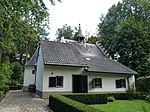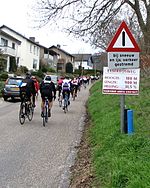Oud-Valkenburg
Former municipalities of Limburg (Netherlands)Populated places in Limburg (Netherlands)Valkenburg aan de Geul

Oud-Valkenburg (English: Old-Falkenburg) is a village in the Dutch province of Limburg. It is located in the municipality of Valkenburg aan de Geul, and has about 115 inhabitants.Although small, Oud-Valkenburg counts several monuments, among which are two medieval castles: Genhoes and Schaloen. Noteworthy is also the Roman Catholic church of Saint John the Baptist (medieval nave; choir and baroque altar inside by Johann Joseph Couven).
Excerpt from the Wikipedia article Oud-Valkenburg (License: CC BY-SA 3.0, Authors, Images).Oud-Valkenburg
Oud Valkenburg, Valkenburg aan de Geul
Geographical coordinates (GPS) Address Nearby Places Show on map
Geographical coordinates (GPS)
| Latitude | Longitude |
|---|---|
| N 50.854722222222 ° | E 5.8544444444444 ° |
Address
Oud Valkenburg 22
6305 AB Valkenburg aan de Geul
Limburg, Netherlands
Open on Google Maps










